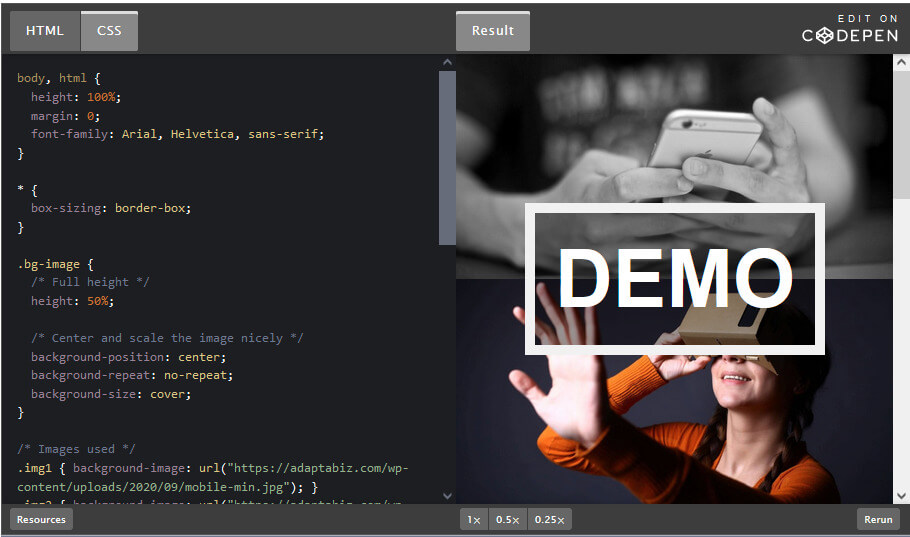Machine Learning is undeniably one of the most influential and powerful technologies in today’s world. Machine Learning is enabling computers to tackle tasks that have, until now, only been carried out by people.
From driving cars to translating speech, Machine Learning is driving an explosion in the capabilities of artificial intelligence – helping software make sense of the messy and unpredictable real world. More importantly, we are far from seeing its full potential. There’s no doubt, it will continue to be making headlines for the foreseeable future.

Trying to know “What is Machine Learning” from Google opens up a pandora’s box of forums, research, and courses. The purpose of this article is to simplify the definition and understanding of Machine Learning.
What is Machine Learning?
Even though there are various Machine Learning examples or applications that we use in our daily lives, people still get confused about machine learning.
In layman’s terms, Machine Learning is the process of teaching a computer system on how to make accurate predictions when fed data. Machine Learning is the ability of a machine to learn something without having to be programmed for that specific thing. It is the field of study where computers use a massive set of data and apply algorithms for ‘training’ themselves and making predictions. Training in Machine Learning entails feeding a lot of data into the algorithm and allowing the machine itself to learn more about the processed information.
Those predictions could be answering whether an animal in a photo is a cat or a dog, spotting people crossing the road in front of a self-driving car, whether the use of the word book in a sentence relates to a paperback or a hotel reservation, whether an email is spam, or recognizing speech accurately enough to generate captions for a YouTube video.
The key difference from traditional computer software is that a human developer hasn’t written code that instructs the system how to tell the difference between the cat and the dog. Instead, a Machine Learning model has been taught how to reliably discriminate between animals by being trained on a large amount of data, in this instance likely a huge number of images labeled as containing cat or dog.
Machine Learning Methods
Machine Learning methods are generally split into two main categories: supervised and unsupervised learning.
Supervised Learning
Supervised learning methods are used to find a specific target, which must also exist in the data. Models are fit on training data comprised of inputs and outputs and used to make predictions on test sets where only the inputs are provided and the outputs from the model are compared to the withheld target variables and used to estimate the skill of the model. The main categories of supervised learning include classification and regression.
Classification – Classification models often have a binary target sometimes phrased as a “yes” or “no.” A variation on this model is probability estimation in which the target is how likely a new observation is to fall into a particular category.
Regression – Regression models always have a numeric target. They model the relationship between a dependent variable and one or more independent variables.
Unsupervised Learning
Unsupervised learning methods are used when there is no specific target to find. Their purpose is to form groupings within the dataset or make observations about similarities. There are many types of unsupervised learning, although there are two main problems that are often encountered by a practitioner: they are clustering that involves finding groups in the data and density estimation that involves summarizing the distribution of data.
Clustering – Clustering models look for subgroups within a dataset that share similarities. These natural groupings are similar to each other but different than other groups. They may or may not have any actual significance.
Dimension reduction – These models reduce the number of variables in a dataset by grouping similar or correlated attributes.
It’s important to note that individual models are not necessarily used in isolation. It often takes a combination of supervised and unsupervised methods to solve a data science problem. For example, one might use a dimension-reduction method on a large dataset and then use the new variables in a regression model.
To that end, Model pipe-lining involves the act of splitting up Machine Learning workflows into modular, reusable parts to couple together with other model applications to build more powerful software over time.
Reinforcement Learning
It is less common and much more complex, but it has generated incredible results. It doesn’t use labels as such, and instead uses rewards to learn. A reinforcement algorithm learns by trial and error to achieve a clear objective. It tries out lots of different things and is rewarded or penalized depending on whether its behaviors help or hinder it from reaching its objective.
One of the most exciting parts of reinforcement learning is that is a first step away from training on static datasets, and instead of being able to use dynamic, noisy data-rich environments. This brings Machine Learning closer to a learning style used by humans. The world is simply our noisy, complex data-rich environment.
Consider a simple agent that plays blackjack. The states represent the sum of the cards for the player. The actions represent what a blackjack-playing agent may do — in this case, hit or stand. Training an agent to play blackjack would involve many hands of poker, where reward for a given state–action nexus is given for winning or losing. For example, the value for a state of 10 would be 1.0 for hit and 0.0 for stand (indicating that hit is the optimal choice). For state 20, the learned reward would likely be 0.0 for hit and 1.0 for a stand. For a less-straightforward hand, a state of 17 may have action values of 0.95 stand and 0.05 hit. This agent would then probabilistically stand 95 percent of the time and hit 5 percent of the time. These rewards would be leaned over many hands of poker, indicating the best choice for a given state (or hand).
Semi-Supervised Learning
Semi-supervised machine learning is a combination of supervised and unsupervised Machine Learning methods. With more common supervised Machine Learning methods, you train a Machine Learning algorithm on a “labeled” dataset in which each record includes the outcome information. This allows the algorithm to deduce patterns and identify relationships between your target variable and the rest of the dataset based on the information it already has. In contrast, unsupervised Machine Learning algorithms learn from a dataset without the outcome variable. In semi-supervised learning, an algorithm learns from a dataset that includes both labeled and unlabeled data, usually mostly unlabeled.
Neural Networks
Semi-supervised machine learning is a combination of supervised and unsupervised Machine Learning methods. With more common supervised Machine Learning methods, you train a Machine Learning algorithm on a “labeled” dataset in which each record includes the outcome information. This allows the algorithm to deduce patterns and identify relationships between your target variable and the rest of the dataset based on the information it already has. In contrast, unsupervised Machine Learning algorithms learn from a dataset without the outcome variable. In semi-supervised learning, an algorithm learns from a dataset that includes both labeled and unlabeled data, usually mostly unlabeled.
Difference between AI and Machine Learning
Machine learning may have enjoyed the enormous success of late, but it is just one method for achieving artificial intelligence.
At the birth of the field of AI in the 1950s, AI was defined as any machine capable of performing a task that would typically require human intelligence.
AI systems will generally demonstrate at least some of the following traits: planning, learning, reasoning, problem-solving, knowledge representation, perception, motion, and manipulation and, to a lesser extent, social intelligence and creativity.
Alongside machine learning, there are various other approaches used to build AI systems, including evolutionary computation, where algorithms undergo random mutations and combinations between generations in an attempt to “evolve” optimal solutions, and expert systems, where computers are programmed with rules that allow them to mimic the behavior of a human expert in a specific domain, for example, an autopilot system flying a plane.
Machine Learning Tools
Machine Learning open-source tools are nothing but libraries used in programming languages like Python, R, C++, Java, Scala, Javascript, etc. to make the most out of Machine Learning algorithms.
Keras: Keras is an open-source neural network library written in Python. It is capable of running on top of TensorFlow.
PyTorch: PyTorch is an open-source Machine Learning library for Python, based on Torch, used for applications such as natural language processing.
TensorFlow: Created by the Google Brain team, TensorFlow is an open-source library for numerical computation and large-scale Machine L
Scikit-learn: Scikit-learn, also known as Sklearn, is a Python library which has become very popular for solving science, math, and statistics problems–because of its easy-to-adopt nature and its wide range of applications in the field of Machine Learning.
Shogun: Shogun can be used with Java, Python, R, Ruby, and MATLAB. It offers a wide range of efficient and unified Machine Learning methods.
Spark MLlib: Spark MLlib is the Machine Learning library used in Apache Spark and Apache Hadoop. Although Java is the primary language for working in MLlib, Python users are also allowed to connect to MLlib through NumPy library.
Summary
In this post, you discovered a gentle introduction to the different types of learning that you may encounter in the field of Machine Learning. You learned Supervised Learning, Unsupervised Learning, the difference between AI and Machine Learning, and tools for Machine Learning.









